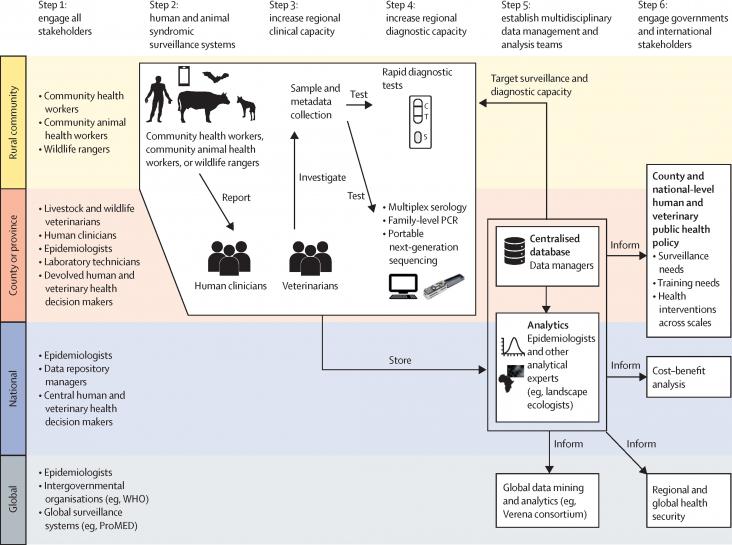
In 1948, countries of the world came together and founded WHO to promote health, keep the world safe and serve the vulnerable – so everyone, everywhere can attain the highest level of health and well-being. This year is WHO’s 75th anniversary year is an opportunity to look back at public health successes that have improved quality of life during the last seven decades. It is also an opportunity to motivate action to tackle the health challenges of today ̶ and tomorrow. To honour this important day, Elsevier is proud to offer a publicly available special issue featuring book chapters and journal articles dedicated to advancing world health preventions and solutions.
The COVID-19 Response: The Vital Role of the Public Health Professional, 2023, Pages 143-154
The Thinking Healthcare System: Artificial Intelligence and Human Equity, 2023, Pages 99-129
Clinical Decision Support for Pharmacogenomic Precision Medicine: Foundations and Implementation, 2022, Pages 85-106
Research Ethics in Behavior Analysis: From Laboratory to Clinic and Classroom, 2023, Pages 63-86
AI Assurance: Towards Trustworthy, Explainable, Safe, and Ethical AI, 2023, Pages 429-451
Clinical Decision Support and Beyond (Third Edition): Progress and Opportunities in Knowledge-Enhanced Health and Healthcare, 2023, Pages 715-725
Digital Innovation for Healthcare in COVID-19 Pandemic: Strategies and Solutions, 2022, pp 109-136
Field Guide to Global Health and Disaster, 2022, Pages 167-186
Artificial Intelligence in Urban Planning and Design, Technologies, Implementation, and Impacts, 2022, Pages 121-138
Pandemic Risk, Response, and Resilience, COVID-19 Responses in Cities Around the World, 2022, Pages 3-12
Resilient and Sustainable Cities, Research, Policy and Practice, 2023, Pages 343-353
Computational Modeling of Infectious Disease: With Applications in Python, 2023, Pages 93-119
International Journal of Clinical and Health Psychology, Volume 23, 1 April 2023
Journal of Parallel and Distributed Computing, Volume 172, February 2023
Transplantation and Cellular Therapy, Volume 28, October 2022
Current Problems in Cancer, Volume 46, June 2022
Cancer Letters, Volume 531, 10 April 2022
International Journal of Clinical and Health Psychology, Volume 23, 1 January 2023
The Lancet Oncology, Volume 23, September 2022
The Lancet Digital Health, Volume 4, June 2022
Genomics, Volume 113, November 2021
Neurobiology of Brain Disorders (Second Edition): Biological Basis of Neurological and Psychiatric Disorders, 2022, Pages 1009-1023
Diabetes Digital Health and Telehealth, 2022, Pages 269-280
Healthcare Strategies and Planning for Social Inclusion and Development Volume 2: Social, Economic, and Health Disparities of Rural Women, 2022, Pages 1-42
Emerging Practices in Telehealth: Best Practices in a Rapidly Changing Field, 2023, Pages 131-140
The Sepsis Codex, 2023, Pages 247-255
Stroke (Seventh Edition): Pathophysiology, Diagnosis, and Management, 2022, Pages 179-186.e3
Ticks: Biology, Ecology, and Diseases, 2023, Pages 193-215
The New Public Health (Fourth Edition), 2023, Pages 1097-1158
The Lancet Global Health, Volume 10, November 2022
The Lancet Regional Health - Americas, Volume 11, July 2022
The Lancet, Volume 399, 4 June 2022
The Lancet Public Health, Volume 7, June 2022
The Lancet Regional Health - Americas, Volume 10, June 2022
The Lancet. Global health, Volume 10, 1 May 2022
The Lancet Global Health, Volume 10, April 2022
The Lancet Regional Health - Western Pacific, Volume 29, December 2022
International Journal of Clinical and Health Psychology, Volume 23, 1 January 2023
The Lancet Oncology, Volume 23, September 2022
The Lancet Digital Health, Volume 4, June 2022
Genomics, Volume 113, November 2021
Current Developments in Nutrition, Volume 6, 1 August 2022
Current Developments in Nutrition, Volume 5, Issue 8, August 2021, nzab096
Current Developments in Nutrition, Volume 6, 1 August 2022
Current Developments in Nutrition,
2022,
100001,
ISSN 2475-2991
Current Developments in Nutrition, Volume 6, Issue 9, September 2022, nzac131




